तेजी से बढ़ रहा रोटो मोल्डिंग उद्योग , अगले कुछ वर्षों में यह दोगुना होने की उम्मीद
May 30 , 2022
आज भारत में पॉलीमर की उपभोक्ता हर साल 2,50,000 टन है जिसमे से ज्यादातर एलएलडीपी है। भारत में एलएलडीपी तथा अन्य रेसिन पीपी, नायलॉन पीसी आदि 40,000 टन रोटो ग्रेड आयात किये जाते हैं। रोटो क्षेत्र में भी 2 लाख टन रीसाइकल्ड पॉलीमर का उपयोग करने का अनुमान है। बताते चलें की रोटो उद्योग एकल उपयोग (Single Use Plastic) वाले प्लास्टिक का उत्पादन नहीं करता है। रोटो उद्योग के बारे में आगे बताते हुए एल के सिंह का कहना है की पिछले वर्ष कोरोना के कारण जहाँ दूसरे उद्योग बंद पड़े थे, वहीँ दूसरी ओर रोटो उद्योग इस वक्त भी लगातार काम कर रही थी क्योंकि रोटो चिकित्सा और बाकी उपकरणों के निर्माण में सुविधा देता है।
भारत में रोटो उद्योग 65% पानी की टंकियों और 35% गैर टैंक अनुप्रयोगों (Application) जैसे मोटर वाहन, सड़क सुरक्षा, बुनियादी ढांचा, मनोरंजन, अपशिष्ठ प्रबंधन, चिकित्सा आदि उत्पादों को ढांचागत (molding) करता है। हाल के रुझानों से ये भी पता चला है कि उद्योग के बड़े खिलाडी जैसे आशीर्वाद, प्रिंस, सुप्रीम, सुधाकर, ओरिपलास्ट आदि भी रोटो बाज़ार में प्रवेश कर रहे हैं। रोटो मोल्डिंग की सराहना करने वाली ये कंपनियां HDPE/ PVC पाइप और फिटिंग का भी उत्पादन करती हैं। विदेशी रोटोमोलडर भी भारत में व्यापार की तलाश में है।
ROMA(रोमा) कंपनी का जिक्र करते हुए श्री एल के ने बताया की रोमा विशेष उत्पादों के विकास की ओर काम करता है और अच्छे मानकों के साथ उच्च गुणवत्ता वाले उत्पादों पर ध्यान केंद्रित करता है।
श्री राजेंद्र शुक्ला जी, श्री रोहित रूंगटा जी, श्री भूषण खड़के जी, श्री मनोज पत्रिया जी, श्री चेतन बंसल जी, श्री वेंकट महादेवन जी रोमा डायरेक्टरस के कुशल नेतृत्व में बहुत अच्छा रोटोमॉल्डिंग इंडस्ट्रीज का प्रोफेशनल मीटिंग हुआ
रोमा के बारे में जानकारी
रोमा भारत और विदेशों के रोटोमोल्डिंग उद्योग का, उसके द्वारा और उसके लिए एक संघ है। रोमा कंपनी रजिस्ट्रार, मुंबई - भारत में एक गैर-लाभकारी संस्था के रूप में पंजीकृत है। रोमा का गठन आपसी सहयोग, समानता और पारदर्शिता के बुनियादी सिद्धांतों पर किया गया है.
www.romaorg.in
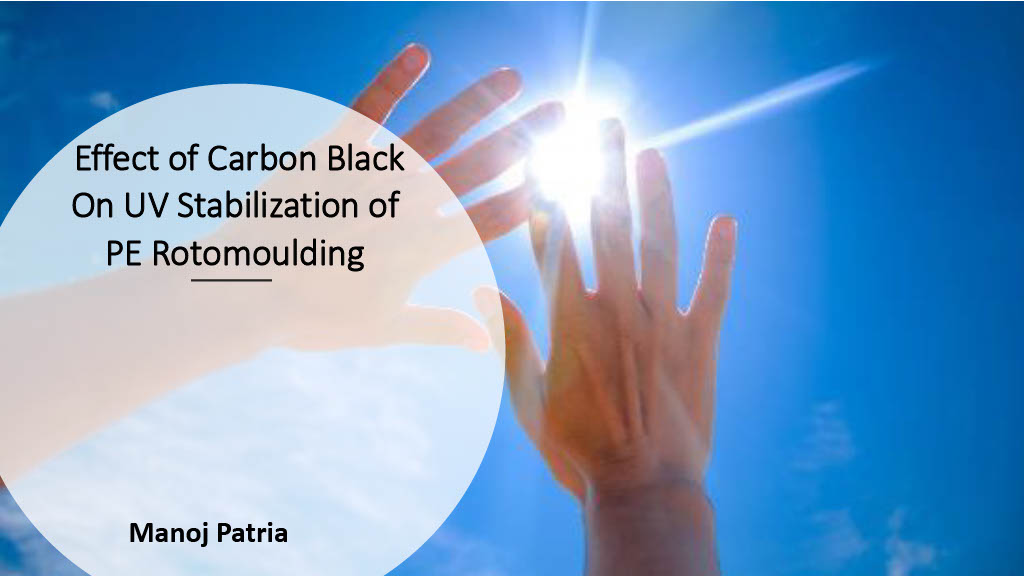
Effect of Carbon Black On UV Stabilization of PE Rotomoulding
May 18 , 2022
Introduction of UV Stabilization’s:
Finished PE products designed for external applications may degrade in use, with time. They are said to “weather” when their structure changes due to light, heat, moisture and oxygen contact. Plastics absorb sunlight radiations and undergo photo-chemical reactions. Oxidation occurs leading to an alteration of their colour, texture or composition resulting in impact loss, embrittlement, chalking or surface cracking. Out of the whole solar emission spectrum, only the smallest part, the 290-400 nm UV region, is responsible for most of the polymer damage. Photo-oxidation of polyethylene proceeds by a free radical chain mechanism in presence of oxygen: the ultraviolet light absorbed by the polyethylene provides sufficient energy to break key molecular bonds and generate free radicals that propagate to give hydroperoxides, compounds containing hydroxyl, carbonyl and vinyl groups, which also absorb UV radiation and undergo further degradative processes. As a result, succession of chain scissions and chain recombination's (crosslinking), including more fragile units, induces drastic physical degradations
In order to limit or postpone the onset of degradation, several types of UV light stabilizers can be added to the polymer. The most important stabilizer types work by screening out the harmful ultraviolet light - for instance UV absorbers such as benzophenones or small dispersed particles such as carbon black or inorganic pigments. Other very effective UV stabilizers are UV quenchers and HALS (Hindered Amine Light Stabilizers).
UV Stability in Water Tanks:
Cylindrical vertical tanks are commonly used for outdoor applications and hence, usually manufactured from
polyethylene resin with addition of carbon black OR Colored with UV stabilizers.
Rotational moulded polyethylene water storage tanks may be produced either with monolayer or multilayer wall construction. For multilayer wall construction, the wall shall consist of minimum two layers to maximum five layers. Tanks produced from multilayer walls, provide improved overall performance and service life owing to each layer providing desired specific functional property. Each layer of the wall shall have uniform thickness.
For monolayer wall construction, compounded resin of polyethylene and carbon black shall be used. Carbon
black provide desired outdoor weathering resistance. A fine, well-dispersed carbon black provides the best.For multilayer wall construction, the typical wall design comprises of inner layer, in contact with water, of white colour and the outer most layer, which is also exposed to the sunlight, shall be of black colour. The thickness of outer layer shall be minimum 50 percent of the total wall thickness. The middle layers, also called as core layers, may be a single layer for 3-layer tank to maximum three core layers for 5-layer tank. Core layers may be made of solid or foamed polyethylene.
Carbon Black as a UV Stabilizer :
Carbon black is one of the most efficient and widespread light absorbers for plastics applications. Several important segments of the plastics industry rely on carbon black for UV stabilization of weather- resistant products like Drip laterals, Plastics Pipes, Agri films & telecommunications and power cable jacketing. Typically, a 40% Carbon Black MB is let down to achieve a Carbon black loading of 2.5% CB in a plastics products to get a desired UV stability.
- How does carbon black work:
Carbon black is an effective UV absorber. It offers the best UV protection for plastics, by absorbing /screening out damaging wavelengths, and by inhibiting photo-oxidation via its surface
- Factors influencing the performance of Carbon black:
Carbon black (CB) is more than a colorant. In addition to its tinting power, electrical or filler action, it provides plastics with a long-term and low cost UV protection, stabilising polyolefins and other polymers against sunlight.
The UV protection property of CB is dependent upon the following properties:-
-
- Morphology,
- Loading
- CB dispersion & Dilution
Morphology :
The morphological characteristics of carbon black are dependent on the following properties :-
- Particle Size,
- Surface Area,
- Structure.
- See Fig 2
Particle size (nm):
It is an arithmetic mean of diameters of primary particles of a carbon black grade. At the same loading a finer particle size grade would offer more surface to incident light and hence a larger UV absorbing efficiency than a coarser particle size grade.
See fig 3&4
Surface Area(m2/g):
Surface area is determined by nitrogen absorption; smaller particles will offer a larger surface area per unit weight and hence effective UV stabilization..
Structure : Structure or DBP absorption(ml/100g) is the measure of voids volume and describes the degree
to which the CB particles are fused to form aggregates.
C Black Loading levels :
The appropriate loading level depends on the part thickness, exposure condition and type of carbon black. Usually loading between 2 to 3% imparts optimum UV protection. The loading level along with the particle size decides the effectiveness of the CB. As can be seen from the corresponding curve(Fig.5 & 6),a finer particle CB at the same loading gives exceptionally effective performance w.r.t UV light absorption.
Influence of Carbon Black Dispersion:
Choosing a correct grade of C black with small & consistent particle size is a must to get a good weathering performances. However, to get that total benefit, care must be taken to disperse them correctly in the polymer matrix. Dispersion quality impacts the final carbon black agglomerate size in the polymer:- an optimal dispersion is one that evenly distributes carbon black throughout a polymer down to the smallest carbon black units, the aggregates, - a poorer dispersion results in larger agglomerates. In the presence of agglomerates, UV light is more likely to be rather scattered than absorbed, and polymer UV degradation may start as CB screening protective effect is reduced. If the polymer processing equipment's are not good even a good quality C black MB can be poorly dispersed in a polyethylene leading to bad performance in UV protection.
Influence of Dilution:
Carbon black in masterbatch form is typically added to the polymer while processing. The Dilution is a measure of how well and how easily a masterbatch mixes with a fabricator's polymer. Thus a masterbatch exhibiting good dilution properties will produce processed articles (film, bags,pipe, sheet, etc.) showing excellent distribution of the masterbatch within the fabricator's diluting polymer.
Conversely, a poorly diluted masterbatch will produce processed articles showing surface defects (lumps, voids,poor surface), inconsistent colour and/or opacity, streaking and inferior physical performance(See fig 8).
The masterbatch producer and end user are jointly responsible for ensuring good dilution. They have to design a total "system" to ensure the dilution process is optimized. "System" refers to the various factors which influence the dilution process, i.e.: MFI of the MB, MFI of the diluting resin, types of processing equipment (extruder, injection moulding machine, etc.),processing temperatures, production speeds, back pressure (screen packs, etc.)
Conclusion :-
To achieve optimum UV performance requires the “right mix” of:
- Carbon Black Particle Size : The C blacks of type N220 (20nm particle size) will give better UV performance compared to coarser blacks (N660 type with 60nm particle size). Further, mean particle size & particle size distribution of C black should not vary from batch to batch as it has a direct bearing on UV stability
- Carbon Black Loading : Optimum loading for N220 type of C blacks is 2.5%. This gives desired UVprotection. Coarser blacks even at higher loading will not give desired UV performance.
- Carbon Black dispersion quality: C black dispersion in MB as well as end product has to be satisfactory. Even a good quality C black, if poorly dispersed, will give unsatisfactory UV performance .In order to get a satisfactory UV performance in the end- product, all the above factors must be considered prior to selection of Carbon black masterbatch.
Manoj Patria (7738383558) info@romaorg.in
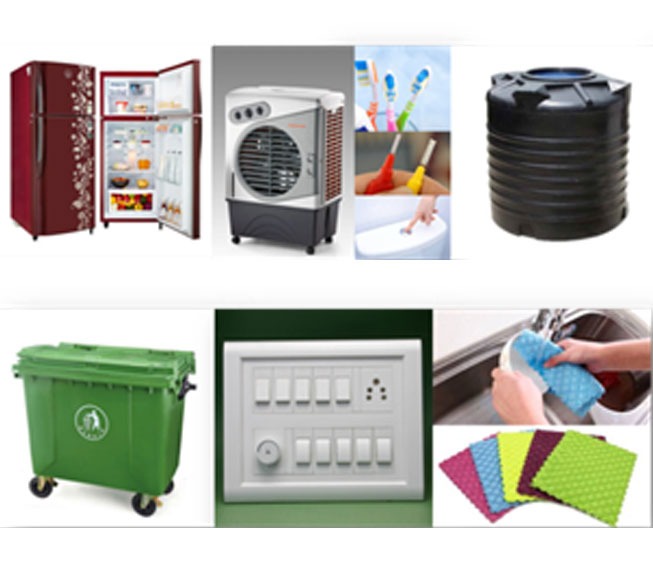
Article on Anti-Microbial MB in ROTO MOULDING PRODUCTS
Dec 17 , 2020
Protect Plastics from Microbial growth – save Human health.
“Sharing is Life” and ‘Innovation together is living a Good Life” – an example of value addition.
Every touch by human beings carries germs, every volume of air that enters our home or working area, are unfiltered, which carries germs, every drop of water that enters our home have contamination with microbes, every fruits & vegetables that comes in our home contains germs, gradually developing a biodiversity of microbes, making our living unsafe.
The air we breathe, water drink, the foods we store, the cloth we wear must be free from germs. Germs mean microbes – microbes are living organisms – such as fungus, algae, bacteria and virus. To protect ourselves from microbes we need to filter air, filter water, keep our cloth dust free and clean. Dust that can be the form of Microbes comes from outside.
Cleanliness we have taken care to some extent using detergent and washing Machine, Drinking Water we have taken care to some extent by using RO but water for other usages & air are not yet safe.
Plastics become our most important material for making our life comfortable. During the life cycle of any plastics product, designed for the well being of Human, get in touch with millions of microbes on exposure to weather season after season. Microbes when comes in contact with plastics, it remains for long time, multiply themselves- resulted into many problems like moulds ( grey Spots), Scale formation, and degradation. This leads to deterioration in mechanicals and generates foul smell. Human being is carrying many microbes. On research we found three things triggered microbe growth 1) Human touch, 2) Media – Air, Water, Objects 3) presence of moisture. Being in Plastics Industry, we have social responsibility at least to protect our products from microbial growth, and save human life from the diseases those influence by microbes. We can inhibit microbe growth on Plastics. Recent Pandemic of Corona Virus, gives us many lesson and it has stimulated awareness on Antimicrobial Additives in Plastics is needed to protect Human health.
Time has come when Plastics Industry need additionally treated plastics to safeguard Human. Taking this an opportunity Industry has developed both food grade and non food grade Anti-microbial MB.
Various applications of Anti-microbial in Rotomoulded Water Tank, Cooler Tank - any microbes that comes with air & Water, will be killed by Anti-Microbial chemicals added. Major microbes that grow in Cooler is fungus.
Car - AC inlet Air Filter, based on PP Melt Blown Non woven’s, architect with Anti-microbial, so as to take care of protecting from microbes to get enter along with air inside.
Edible Oil Pack- Laminates are designed with outer layer with Anti-microbial additives, which will take care of any microbes come in contact and kill them.
Health care Products - Product architect with Anti-Microbial MB, to protect Human from Bacteria -virus. Refrigerator Handle, Vegetable Basket etc. In coming times- Inside liners also will be architect with Anti-microbial MB.
The Paint Pails which is used for packing Paints, also being moulded with Anti-Microbial MB.
Garbage Talley - anti-microbial MB added to garbage trolley to kill microbes so as not to create diseases, by spreading microbes.
Health care products like bio-medical accessories are, beds are made with Anti-microbial MB, to protect human from Hospital Bed Bugs.
Anti-Microbial is an active silver ion based compound, which inhibits the growth of deadly Bacteria, Fungus, Molds, is safe, non toxic & eco–friendly. Antimicrobial MB tested at Govt. Approved laboratory and cover wide spectrum of antimicrobial activity. Destroys 99.99% bacteria such as Staphylococcus aureus ATCC 6538, Escherichia coli ATCC 8739, E. Coli (Diarrhoea), MRSA (Infections), Pseudomonas Aureus (Pneumonia), Bacillus Subtilis (Gastro Intestinal track affected), Aspergillus Niger (Black Mold), Candida Albicans (Itchiness).
S.R.Debnath, Vice President ( Technical - Marketing), SCJ Plastics Ltd., New Delhi.
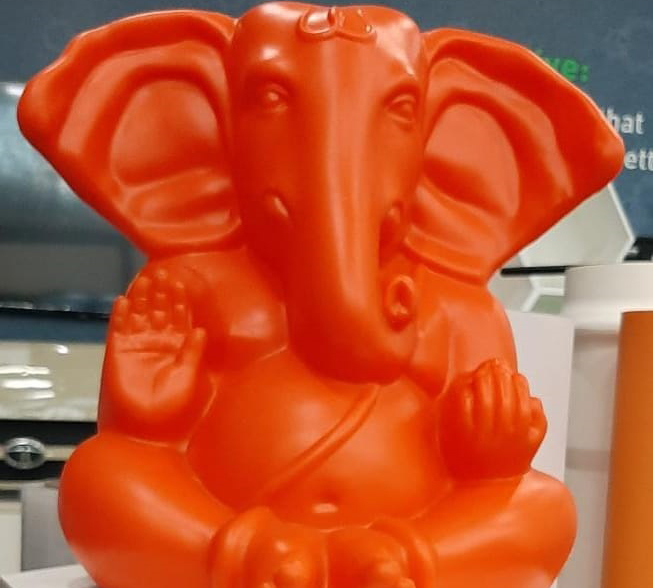
Changes the face of Indian Rotomolding industry in last one decade
Jan 29 , 2020
‘Rotomolding’ is a wonderful process where industry always attracting due to higher profit margin, design freedom (complex designs possible), seamless products (no weld line), Several layers with uniform wall-thickness, Stress-free , Insert moulding is key to win. Rotomoulding business is suitable for small size orders due to slow production cycle.
Rotomolding sector is always promising and made-for-passionate entrepreneur’s. Indian economy is booming very fast & we have witnessed many revolutions like Digital revolutions (latest), Farm-to-Retail revolutions, Green revolutions, Milk revolutions, Industrialization. India have large numbers of skilled younger manpower that is added advantage for growth of Indian economy. In last decade Retail sector, Infrastructure sector, Life style sector, Road safety sector, Material handling sector and Automotive sector grown in rapid pace. To cope-up growth of these sector there are huge demand of Rotomolded Product’s in India.
Many rotomolders witnessed multiple growth in Custom moulding sector and their turnover / profit increased multiple times. They added high output better technology efficient machines, developed quality products, developed skilled manpower added multiple processing units.
Indian Rotomolding sector witnessed a huge shifting from Tank sector to Non-Tank sector in last decade. In 2009 the ratio of Tanks: Non-tank was 90:10 and now it shifted to 70:30. The shifting takes place because High margins in Non-Tank (Custom moulding) products also many key attributes like organise customers , secure payments from end-users, Less competition. Value-added Non-tank (custom moulding) products needs attributes like commitment to Quality, Best service, On Time delivery and Total system production (Total solution).
Indian Rotomoulding market witnessed few better margin products like Road barriers for NHAI/Airports/Metro, Waste bins for Municipal corporations/ ‘Swatchh Bharat Abhiyan’, School furniture’s for ‘Sarva Shiksha Abhiyan’, Manholes for Sewerage treatment, Fuel tanks for commercial vehicles like Ashok Leyland, TATA, Eicher, TAFE, New Holland, John Deere, Volvo, New Holland, JCB, etc.
Material note: In material front Custom moulding products needs high performance in comparison of Tanks. To address their needs now many variety of Rotomoulding materials are available in Indian market like Traditional LLDPE grades (in Butene, Hexene and Octene comonomer), 3rd generation Metallocene LLDPE grades, XLPE, pre-colored powders, etc. Now Indian rotomolders have variety of resin suitable for applications. Better resin selection give value additions to product like better ECSR, Tensile, Stiffness, Impact properties. Additives industry also given moral boost-up to Roto sector by better quality of Carbon black masterbatch, UV stabilizers, Anti-Oxidants, Antistats, etc. For underground applications high density LL grades, for Auto fuel tanks XLPE / Metallocene grades, for toys pre-colored UV stabilised LL powders are most popular in India.
Butene is preferred choice for water tanks up to 10,000 Ltrs. Hexene and Octene are going popular for tanks ranges from 10KL to 25KL for better mechanical properties and thin-gauging. Hexene/Octene/XLPE/PP are the preferred choices for Chemical tanks and Diesel storage tanks. Addition of extra AO’s (Secondary and Primary) for large size tanks to take care thermal and photo degradation. UV stability is again challenging point with end-user’s asking from UV4 to UV20 depend on use of the tanks. Faster densification (faster bubble removal) is need of the hour for better productivity and quality. Pre-coloured ready-to-use powder is going popular for better results. Use of Expanded Polyethylene foam (EPE) in middle layer of tanks for heat insulations and higher rigidity. Size of the powder also playing vital role, coarser powder with 35 mesh will give better results. Cryogenic pulverising is again costly affair for PP, ABS, Nylon, EVA. Globally micro-palletising is picking up for better powder size distribution.
Marking and labelling: Primary challenge on PE products is printing. By the surface adhesion advancements, Corona or Flame treatment may be only option for printing. Post-moulding labelling followed by heat treatment is an option available. In recent times In-mould labelling is becoming popular and providing permanent marking.
Use of Recycled materials: Usage of recycled materials would be a welcome step, though caution here is using appropriate quality and input must. Unknown sourced recycle materials would be hazardous to industry as well as actual users. Associations, customer forums, seminar / conferences are playing vital use for quality water tanks and use of recycled materials.
Need of the hour: Reprocess materials are major threat for quality of the tanks, Health and Hygiene factor. Standardisation must require for all the BIS and non-BIS water tanks. Automation and close –oven better heat control. Rapid production with new large size oven machines. Shifting from manual fabricated moulds to CNC machined moulds.
Non-tank sector Highlight’s : High entry barrier, advancements require for machine, moulds and operations. Higher investments than tank sector is the barrier to restrict un-organised small players. Better control and higher level of automation for higher quality of products. Be creative, be passionate, invest in designs / moulds, risk-taking are the key attributes requires to work in non-tank sector. Better margins, Less competition, higher value –addition. Non-tank applications holds market share of 30% in Indian Rotomolding market. This sector is growing very rapidly @ 20% per annum. Major Non-tank application sector’s are Material handling, Automotive, Clean India Mission, Road safety, Furniture’s, Toy’s, Retail products and Custom Moulding. Few rotomolders are predominantly in to business of Non-tank applications and few customers are in both tanks and non-tanks businesses. Mannequins and Retail products are highest margin products in India.
Infrastructure projects like generating high demand of roto products like Smart cities, State // National Highways/ Expressways and Railways/Metro/Bullet trains. New growth generated by Assam, Telangana, Andhra Pradesh, Orrisa, North east, Chattisgarh states . Clean-India-mission, Namami-Gange (Ganga river cleaning), Kumbh Melas, etc generating huge demands. High emission norms set by Government-Of-India generating new business opportunities in commercial Automotive sector. BHARAT emission norms for commercial vehicles generating new potential’s for Diesel Fuel tanks, Canopy, Urea tanks (adblue tanks)
Reliance Industries Ltd. played a vital roles in growth of rotomoulding industry in India. We have a platform for technical, business development, product development for challenging products.
-From Manoj Patria, Reliance Industries Ltd. (manoj.patria@ril.com)
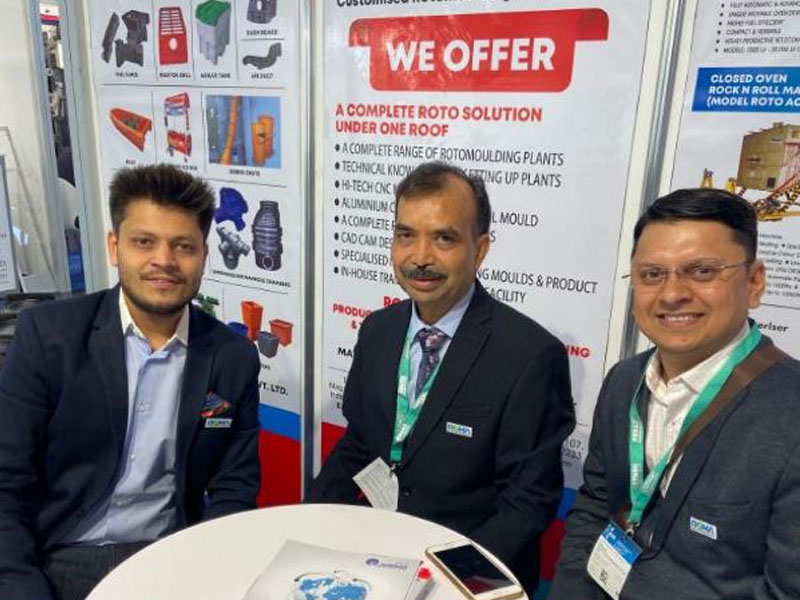
ROMA Members represented at K-2019, Dusseldorf, Germany.
Nov 23 , 2019
ROMA Members represented at K-2019, Dusseldorf, Germany. K-2019 held in Messe Dusseldorf, Germany during 16th to 23rd October’19. ROMA members also exhibited their products with stall in machinery pavilion like MPLAST, Maharashtra Maha Polyplast, NAROTO, Reinhardt and in the finished goods category Sangir Pipe displayed their products. ROMA members like Mr Sushil Sonegra, Mr Rajendra Shukla, Mr R K Sethi, Mr Bhushan Khadke, Mr Anand Panchal, Mr Shivinder Chawla, Mr Dhanu Patel, Mr Bhaskar Parekh, Mr Paras Parekh, , Mr Sushil Mandana well attended and represented Indian Rotomoulding industry in global forum.
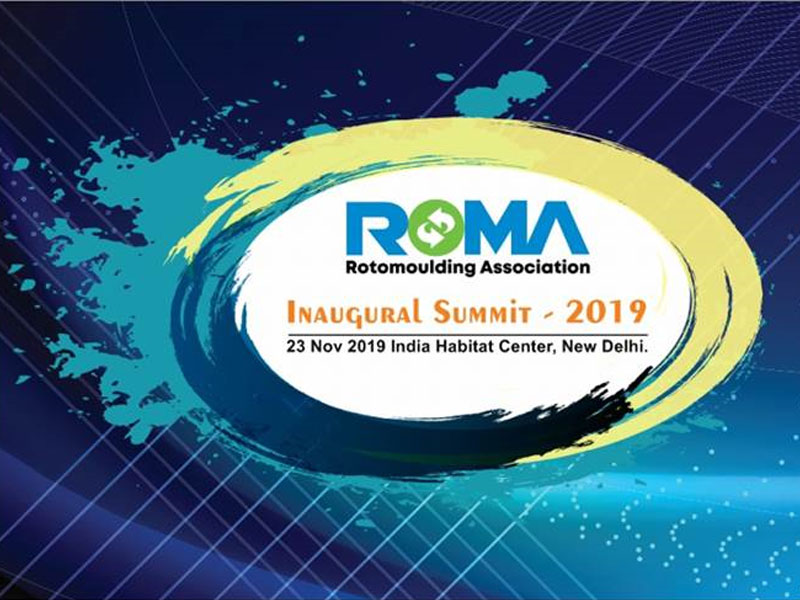
ROMA Inaugural Summit - A grand success.
Nov 23 , 2019
The maiden conference of ROMA - The Inaugural Summit 2019 - was held at the India Habitat Center, New Delhi on the 23rd Nov. The conference included presentations by eminent International and Indian epxerts from the Rotomoulding Industry.
A record number of 120 delegates attended the Conference where 6 Speakers were from overseas companies and 2 were from India. Mr. Puneet Madan
President, Reliance Industries delivered the Keynote Address. Mr. Aldo Quaratino from Matrix Polymers - UK, Mr. Paul Nugent from Polymer Link - Malaysia, Mr. Oliver Wandres from MAUS GmbH - Germany, Mr. Ronny Ervik from Ultra Polymers - Norway & Mr. Gary Lategan from Roto Solutions - South Africa delivered technical presentations on very relevant topics.
The event turned out to be marking of a revolutionary beginning of great times to come for the rotomoulding industry.
The conference ended with evening dinner and cocktails.
